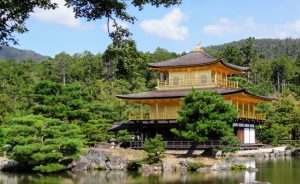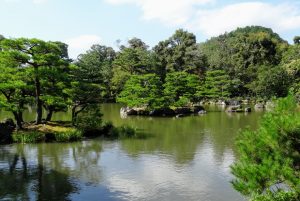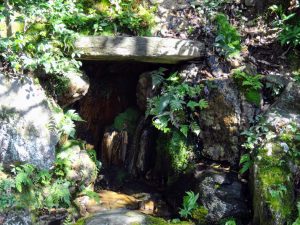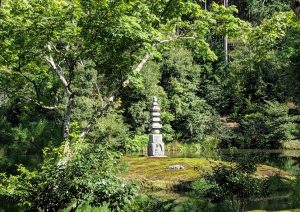
From the President:
As I sit here in the morning sunshine on the eve of the hibernal solstice, I’ve just returned from a cold walk on the beach where my wooden clogs clopped on the frozen sand as if on concrete. The past year’s accomplishments of the ladies of the GCBB are many; from the regular informative meetings, the busy bustle of the Greenhouse, and the race to the Plant Sale was added the days-long visit of the GCA’s Annual Meeting Post Trip. This was a major and successful feat of organization accomplished at the able direction of Ruth Furman and Ellen Christie. Our year was topped off with a holiday party to remember, one that transformed the Coach House into a paradise of joy. Thank you to Linda Cornell, Laura Campbell, Susan Mead, Mary Schubert, and Tina Read. I recently saw the movie “It’s a Beautiful Day in the Neighborhood” with Tom Hanks as Mr. Rogers. This is a grown-up, worth-seeing movie, and the message for all ages is moving and compelling: Listen and Care, Care to Listen. As we head into 2020, caring to listen is a good message to take with us. As a club we do care and listen to each other, and as a garden club, we listen and care for our environment.
A happy and a fruitful New Year to us all.
Ruth
Calendar
Check the calendar in the Greenhouse for any conflicts. Committee chairs
should note all meetings there.
January
Monday, Jan. 6—10 a.m. Awards Committee meets at Carolyn Willard’s, 32 Grinnell Road, South Dartmouth. Please pass along any suggestions for recognitions to Tammy Beckman, chair.
Saturday, Jan. 11 — 9:30 a.m., Seed Selection meeting at Anne Heller’s, 11 Middle St., South Dartmouth.
Tuesday, Jan. 14—10:30 a.m. Executive Committee meets in the Coach House..
Thursday, Jan. 16—10:30 a.m. Monthly meeting at Southworth Library will feature a talk by renowned garden photographer Karen Bussolini on “Bringing It All Home: Garden Photography, Garden Making, and the Art of Seeing.” . (See details below). Hostess of the day is Suzie Prescott. Arrive for coffee and goodies at 10 a.m. or enjoy them after the meeting.
Wednesday, Jan. 22—2 p.m., Garden History and Design meets at Nan Sinton’s house, 1170 Russells Mills Road, South Dartmouth.
February
Tuesday, Feb. 18—10:30 a.m. Executive Committee in the Coach House.
Thursday, Feb. 20—10:30 a.m. Monthly meeting at the Southworth Library will feature a talk by Russ Knowles of Proven Winners. (Details below.) Head hostess is Tammy Beckman. Come at 10 a.m. for coffee and goodies and/or stay after the meeting to socialize.
Upcoming:
TBA —Greenhouse Restoration Committee
TBA —Botany Education Committee.
From Program
On Jan. 16, Karen Bussolini, renowned garden photographer, writer and designer will give us a talk on using the camera’s view to evaluate your grade composition. “There’s nothing like looking through the viewfinder of a camera to tell you whether a garden composition works or not. Photography is an abstraction, a discipline and a great tool for understanding and designing gardens. The process involved in making meaningful photographs – setting an intention, paying attention to framing the scene, studying mass, light, composition and point of view – is as important in garden-making as it is for photography,” Karen writes on her website. An accomplished writer and lecturer, she has been the sole photographer for six garden books and photographed for articles in Garden Design, Better Homes and Garden, and Wildflower among others. She’s given lectures for the New York Botanical Garden, several state Master Gardeners programs, the Huntington Library and the lists go on. Feel free to bring guests as this meeting should be a real treat. (Let Head Hostess Suzie Prescott know if you are bringing extra people, however.) eeting begins at 10:30 a.m., at the Southworth Library, Dartmouth St., Dartmouth, with coffee at 10 a.m., socializing after. `Russ Knowles, who has been with Pleasant View Gardens in Loudon. N.H. for more than 30 years and involved with the creation of the Proven Winners line from its inception, will be our Feb. 20 speaker, also at Southworth. As an experienced greenhouse manager, he has worked with large, independent garden centers throughout New England. Again guests are welcome.
Christmas Party Extraordinaire
A Timeless World in the Modern World
By Margaret Forbush
Our recent trip to Japan included a visit to the Kinkaku-ji, Temple of the Golden Pavilion. The gleaming edifice, a World Heritage Site, is part of a complex created  in 1397 by the Shogun Ashikaga. The temple has been razed by fire and rebuilt several times in its lengthy history, most recently in 1955 after an arsonous monk destroyed it. We were looking forward to seeing this unique temple. However, as we headed toward the entrance gate, we encountered the myriad tourists from various countries, their numbers swelled due to the World Cup Rugby tournament being held in Japan. We trudged along with the crowds amid tour guides with their fluttering flags held high. This did not look promising. As it turns out, all was not lost. The temple itself was stunning as it glowed in the sunlight above a lovely pond. What we had not counted on was the quintessential Japanese landscape surrounding the building. While many of the visitors jostled for the right vantage point from which to take selfies with the temple looming large in the background, we strolled around the lake.
in 1397 by the Shogun Ashikaga. The temple has been razed by fire and rebuilt several times in its lengthy history, most recently in 1955 after an arsonous monk destroyed it. We were looking forward to seeing this unique temple. However, as we headed toward the entrance gate, we encountered the myriad tourists from various countries, their numbers swelled due to the World Cup Rugby tournament being held in Japan. We trudged along with the crowds amid tour guides with their fluttering flags held high. This did not look promising. As it turns out, all was not lost. The temple itself was stunning as it glowed in the sunlight above a lovely pond. What we had not counted on was the quintessential Japanese landscape surrounding the building. While many of the visitors jostled for the right vantage point from which to take selfies with the temple looming large in the background, we strolled around the lake.  The path led in a circle, with features along the way. The garden, bountiful with trees and plants, was serene despite the crowds in near proximity. The lake itself was calm, with the gleaming building, blue sky,
The path led in a circle, with features along the way. The garden, bountiful with trees and plants, was serene despite the crowds in near proximity. The lake itself was calm, with the gleaming building, blue sky,
and surrounding vegetation reflected in its glassy surface. Small islands and individual rock formations punctuating the surface provided focal points in the open expanse of water. Hillocks of mossy ground, dotted with evergreens and deciduous trees bordered the lake and our route. Irises emerging from the banks provided a note of color. The koi writhed in a frenzied goldenchool as we approached – undoubtedly expecting food. Rounding a bend we spotted a small wooden building, with its simple squared foundation and gently curving roof, nestled in the hillside. Continuing on, we noticed a rocky grotto surrounded by ferns and moss.
Small islands and individual rock formations punctuating the surface provided focal points in the open expanse of water. Hillocks of mossy ground, dotted with evergreens and deciduous trees bordered the lake and our route. Irises emerging from the banks provided a note of color. The koi writhed in a frenzied goldenchool as we approached – undoubtedly expecting food. Rounding a bend we spotted a small wooden building, with its simple squared foundation and gently curving roof, nestled in the hillside. Continuing on, we noticed a rocky grotto surrounded by ferns and moss. A gentle
A gentle
waterfall tumbled nearby. The final feature of note on the walk was a tower of several stones affixed atop a rock base adorned with carvings of The Buddha. The description above was taken directly from the series of photos I took along the walk. I researched Japanese gardens and this temple to see if I could gain some insight. I should not have been surprised to find that almost every feature I thought noteworthy or photogenic has some significance in a Japanese garden. The formula worked. For starters, this garden is a Japanese strolling garden, literally translated “a landscape garden in the go-around style”. The classical style of the garden is from a period that emphasized the relationship of the structure and its site. In a sense, the landscape was shrunken down in order to squeeze the breadth of nature into a relatively compact space. Each element in a Japanese garden has meaning and the rules for using them are specific. Winding paths represent the journey through life. Trees and shrubs provide texture, form and color.  Evergreens are common and admired for their everlasting nature. Water adds movement and reflection, and flowing water carries away evil. Japanese gardeners mark the seasons with careful attention to a splash of seasonal flowers and trees with vibrant autumn leaves. Long-lived colorful carp are “living flowers”, and symbolize strength and perseverance. Rocks and stones imply a sense of permanency and power. Man-made elements in the garden add interest and sometimes are specifically symbolic. In this case, the island and rocks in the middle of the lake represent the Japanese islands, and mythical moored boats. The tower of rocks on the hillock is known as White Snake Mound, after a legendary reptile that served as a guardian. On the one hand, the nature of a Japanese garden is ephemeral, paying tribute to moving elements and displaying sensitivity to the distinct seasons. In contrast, there is a permanence to other features. Both combine to produce the timeless tranquility found in Japanese gardens.
Evergreens are common and admired for their everlasting nature. Water adds movement and reflection, and flowing water carries away evil. Japanese gardeners mark the seasons with careful attention to a splash of seasonal flowers and trees with vibrant autumn leaves. Long-lived colorful carp are “living flowers”, and symbolize strength and perseverance. Rocks and stones imply a sense of permanency and power. Man-made elements in the garden add interest and sometimes are specifically symbolic. In this case, the island and rocks in the middle of the lake represent the Japanese islands, and mythical moored boats. The tower of rocks on the hillock is known as White Snake Mound, after a legendary reptile that served as a guardian. On the one hand, the nature of a Japanese garden is ephemeral, paying tribute to moving elements and displaying sensitivity to the distinct seasons. In contrast, there is a permanence to other features. Both combine to produce the timeless tranquility found in Japanese gardens.
References:
https://en.wikipedia.org/wiki/Kinkaku-ji
https://m.espacepourlavie.ca/en/elements-japanese-garden
Other references:
http://www.costafarms.com/blog/the-elements-of-a-japanese-garden
https://www.goodhousekeeping.com/uk/house-and-home/gardening-advice/a562018/japanese-garden-ideas/




